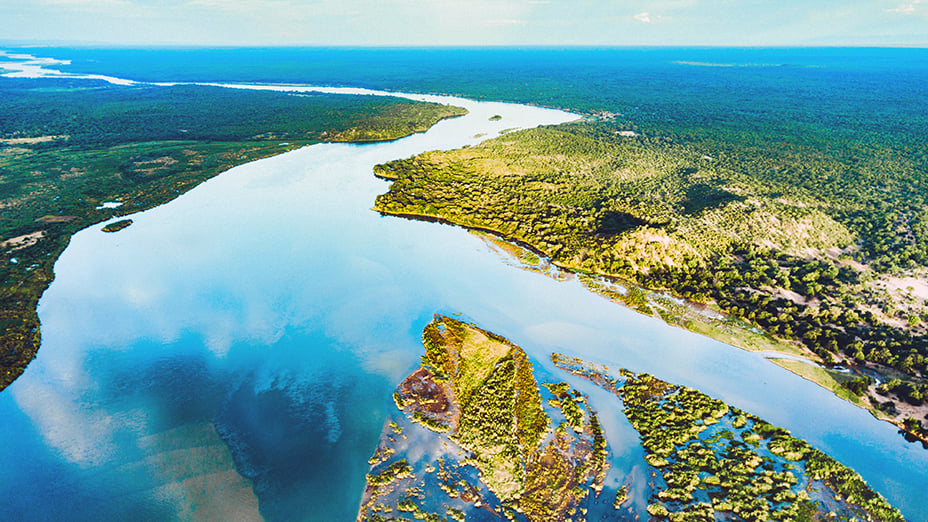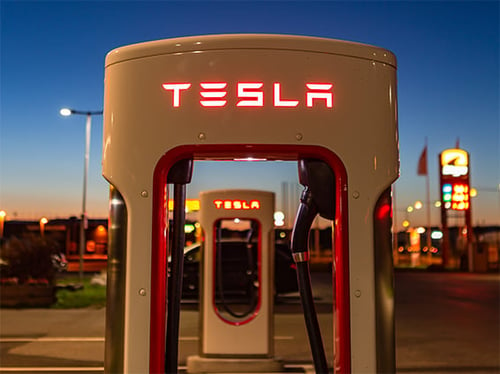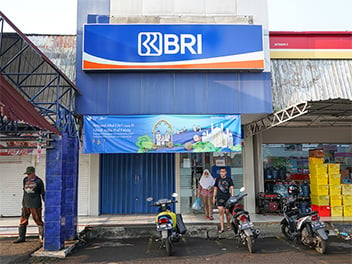Key points
- Interconnected environmental challenges such as climate change, water stress, pollution and biodiversity loss point to an unpredictable future
- Positive Change engages with the change-makers, such as Remitly, Ecolab and Xylem, who will help guide our planet’s future environmental trajectory
- The strategy aims for net zero alignment and completes a fundamental assessment of each company in the portfolio to determine alignment
As with any investment, your capital is at risk.

Nature is the foundation of our societies and economies but is under threat. The operating environment for every company we invest in is strikingly different from just a generation ago. This means that the companies in the Positive Change portfolio – of whom we are stewards on behalf of our clients – face an increasingly unpredictable future. These companies are also change makers, whose contributions will help dictate our planet’s future environmental trajectory.
Climate change, water stress, pollution, and biodiversity loss are interconnected challenges that affect companies in many ways. We engage with companies on environmental topics for three distinct but often overlapping reasons:
- to promote opportunities for impact and investment returns
- to increase resilience to a changing climate
- to mitigate environmental harms
As you will see in the case studies, we often engage with sustainability or regional teams at portfolio holdings on environmental matters. As well as signaling the importance of environmental factors to company management, we also seek to offer companies insight and expertise in this area. Often we do so leveraging the expertise of Baillie Gifford’s internal Climate Team.
Conversations in 2024

AbCellera
ESG reporting requirements

Bank Rakyat Indonesia
Environmental impact monitoring; Climate scenario analysis

Deere
TCFD reporting

Ecolab
Chemical and water savings for customers

Epiroc
Product electrification

Insulet
Product recyclability; Scope 3 emissions

Moderna
Supply chain emissions

Remitly
Scope 1 and 2 reporting

Shopify
Climate targets

Tesla
Physical risk in supply chains

Xylem
Net zero targets
Engagement case studies
Deere
Accounting for and preventing biodiversity loss

© John Deere
Deere is a leading agricultural equipment manufacturer with a portfolio of precision agriculture products and services that can help farmers increase yields and limit environmental harm.
Objective: To raise awareness of the problem of biodiversity loss, to encourage the development of new and impactful products to address the challenge, and to advocate for improved disclosure from Deere on its approach.
Engagement: We began engaging with Deere on biodiversity loss in 2020. Over four years of holding Deere in the portfolio, we have spoken to the company about this issue on seven occasions, across all company levels. At first, our discussions were high-level and aimed to raise awareness of the challenge and how it may affect Deere. They soon developed into more nuanced discussions on the role the company’s precision agricultural tools could play and its role in expanding access to mechanisation in emerging markets.
Through our meetings, we learnt of the many trials Deere was undertaking to expand the use of cover crops, which can enhance biodiversity and protect soil health. We also discussed opportunities for supporting carbon markets and sustainable farming practices. In 2024, we continued the conversation by discussing ways for Deere to improve its Task Force on Climate-related Financial Disclosure (TCFD), drawing upon learnings from the Task Force on Nature-related Financial Disclosure (TNFD).
Outcome: Since we first took a holding in Deere, the company has gone from minimal disclosure on biodiversity loss to demonstrating a strong understanding of how it affects its key stakeholders.
When the company formalised its approach to ESG in 2020, we saw the integration of biodiversity loss as a topic to be managed. In 2021, as the company started to focus more on impact reporting, we saw the inclusion of biodiversity-related impacts from using their products, such as savings of agricultural chemicals through See & Spray. This year, we were pleased to see Deere disclose its plans to undertake a CDP (Carbon Disclosure Project) assessment of its biodiversity-related risks and opportunities. The CDP is an international not-for-profit organisation that operates the world’s largest environmental disclosure system. Through this system, organisations receive comprehensive assessments of their environmental impact and performance.
Tesla
Climate risk in supply chains

Tesla designs, manufactures and sells electric vehicles, energy storage systems and solar panels, and is investing in autonomous driving and robotics.
Objective: To improve the resilience of Tesla’s operations in response to the increasing physical impacts of climate change. Tesla has a concentrated supply chain; therefore, we felt it important to understand its environmental risk exposure.
Engagement: Baillie Gifford’s Climate Team has been working for two years to advance our ability to analyse physical climate risks. As part of this work, they invited climate specialists from the University of Exeter Global Systems Institute to assess Tesla’s asset base and supply chain. One of the aims of this work was to focus on the likely realities of the next 10–15 years, rather than the huge uncertainties of 2050 and beyond. Based on publicly available information, this work concluded that there were specific concentrations of climate risk within parts of Tesla’s supply chain. In particular, the work found an under-representation of wildfire risks in consensus modeling, and identified a small number of highly vulnerable suppliers.
We subsequently met with Tesla’s Head of Sustainability and it's Responsible Supply Chain team to discuss the report, and we had an open discussion on this very complex subject. We heard how Tesla has been approaching climate risk assessments across its business. The team had started by examining physical risk at its own manufacturing locations. This basic assessment suggested that drought was the most significant risk facing these locations. However, recognising the need to include more factors in their assessments, the team is working on building a more sophisticated internal capacity to consider physical and transition risks. It is also working to better understand physical risk among its suppliers, where resilience has long been a key priority, and so the work from the University of Exeter team was very timely.
Outcome: This was a useful discussion, and we were pleased to hear that Tesla wanted to improve its approach. Today, we believe its approach to assessing climate risk is nascent. At their request, we have since facilitated more dialogue between the University of Exeter and Tesla’s supply chain team to support them in better managing climate risk.
Bank Rakyat Indonesia (BRI)
Reducing the environmental impacts of microfinance

Bank Rakyat Indonesia (BRI) is the largest provider of microfinance products in Indonesia.
Objective: BRI provides finance to millions of customers and enterprises, some of which contribute to pollution, greenhouse gas emissions and land degradation. Some of these impacts can negatively harm the interests of BRI’s other loan recipients and Indonesia’s economy. Over 15 per cent of BRI’s loan book is involved in agriculture and 1 per cent in fisheries, activities which contribute over 12 per cent of Indonesia’s GDP and which are particularly vulnerable to climate change and land degradation. We therefore sought to encourage BRI to consider the interrelated nature of its loan book and to help mitigate customer environmental harms where possible.
Engagement: We arranged a meeting with the Head of ESG at BRI after completing high-level research into the nature-related impacts and dependencies of its loan book. We heard how the company is progressing in its own analysis of climate-related factors which might affect its loan book. To date, this has primarily considered climate transition risks given the impending introduction of a carbon tax in Indonesia. Having completed a climate change stress test on 71 per cent of its loans, this naturally focused BRI’s work on engaging with its highest emitting loan recipients – larger projects and companies, rather than its microfinance portfolio. These are positive steps, but this meeting also left us concerned that the physical climate risks to its smaller loan recipients have not yet been Bank Rakyat Indonesia (BRI) Reducing the environmental impacts of microfinance considered in enough depth.
Later in the year, we were invited to spend time with BRI’s ESG team in Jakarta, where we spoke about the challenges of monitoring the activities of microfinance customers, what insights can be drawn from the company’s existing customer data, and how to best engage with customers on climate change. We also discussed physical risk in more depth and shared what we learned from the Baillie Gifford Climate Scenarios project. The climate scenarios that were developed by this project have helped us to consider physical risks to our portfolios and we think BRI may benefit from taking a similar approach.
Outcome: We are pleased that BRI is undertaking climate risk analysis in a systematic way. The company has strong ambitions regarding understanding how its loan book is impacting and is impacted by nature, but there are significant hurdles to overcome. We now have a better understanding of the company’s near-term priorities and have offered our support to advance its thinking and share analysis. Through this work, we believe that we can help BRI reduce the collective impacts of its loan book, and improve the resilience of its micro-, small- and medium-sized enterprise (MSME) customers, leading to better outcomes for the base of the pyramid populations in Indonesia.
Portfolio Considerations
Biodiversity
In recent years, there has been an enormous increase in reports, frameworks and support to encourage the private sector to understand its impacts and dependencies on nature. The most notable of these efforts has been the sector guidance from the TNFD.
We provided an update on our work with this forum, mainly through our involvement in the United Nations Environment Programme Finance Initiative (UNEP – FI), in Positive Conversations 2022. We also continue to monitor the progress of the many data providers to help investment funds and companies measure their impact and dependencies on nature. Obtaining suitable data in this field is a well-known challenge, and we are cautious about suggesting a level of accuracy that may not be feasible and could be misleading. Therefore, we have determined that a qualitative evaluation of a company’s exposure is our most effective approach at this time.
GHG emissions fall into three categories:
- Scope 1 – the direct emissions created by the company
- Scope 2 – the indirect emissions arising from the energy the company consumes
- Scope 3 – all other indirect emissions resulting from the company's activities
Climate
The Positive Change Strategy aims to be net zero aligned. Specifically, we want every holding to demonstrate robust strategic alignment with appropriate net zero pathways. However, we strongly feel that action on climate change cannot wait and intermediate milestones are needed to underpin progress. Therefore, in 2022, we set out some nearer-term expectations which help guide us toward our ultimate goal:
- By the end of 2023 (or within two years of entering the portfolio), we expect 90 per cent (by number) of the portfolio to be reporting their scope 1 and 2 emissions.
- By the end of 2024 (or within years of entering the portfolio), we expect 75 per cent (by number) of the portfolio to be reporting material scope 3 emissions, with 90 per cent reporting by the end of 2026.
- By the end of 2026 (or within five years of entering the portfolio), we expect 75 per cent (by number) of the portfolio to have appropriate net zero-aligned targets.
- By the end of 2040 we aim for the portfolio to be fully net zero aligned.
The concepts of alignment and decarbonisation pathways, which are integral to the portfolio-level net zero commitments we make, continue to evolve. Our aspiration and ability to fulfil these commitments is influenced by a wide range of parties and factors that can be outside of our control, such as client mandates, industry guidance, emissions trends, regulation and government action in support of the Paris Agreement. Consequently, we periodically review our portfolio level net zero commitments to take account of these factors.
Progress to Net Zero – Positive Change portfolio
Data as of 31 December 2024.
Progress to net zero – Portfolio companies
![]() Yes
Yes ![]() Committed * Topic engaged on in 2024
Committed * Topic engaged on in 2024
**SBTi = Science Based Targets initiative
Where no data is entered, the company does not track this metric.
We will monitor and report on an ongoing basis on the extent to which the portfolio is aligned with these guidelines. Each expectation is measured as a percentage of companies in the portfolio. This robust methodology encourages real-world emissions reductions rather than simply divesting from companies to improve portfolio metrics. Full details are available on our website.
All portfolio companies are actively and regularly assessed for net zero alignment and prioritised for engagement accordingly. This assessment is bottom up, holistic and factors in a company’s role in the transition, the nature of its emissions, the geographies in which it operates and the decarbonisation technologies available.
At the end of 2024, the Positive Change Strategy is marginally behind its 2024 expectations. This was unsurprising given the refreshment the portfolio underwent in 2024 and a shift in attitudes towards ESG disclosures in some geographies. For example, Duolingo and Remitly decided not to disclose scope 1 and 2 emissions ahead of regulation. Additionally, three new holdings purchased in the latter half of the year – The New York Times, Savers Value Village and Ashtead – all fail to report scope 3 emissions. Disclosure is not the only factor we use in the analysis of net zero alignment, but it is important and feeds into our engagement priorities.
In 2024, we engaged on emissions reporting with the heads of Sustainability at Insulet and Remitly. During these meetings, we emphasised the importance of reporting and were pleased that efforts were underway and that we can expect improved disclosures. Other engagements were less fruitful, such as our meeting with Shopify’s Head of Sustainability, where we learnt that the company does not intend to set emissions reduction targets unless it becomes mandatory.
Even where companies have strong emissions disclosures and targets, we often still need to engage on a company’s approach to mitigating climate change, especially when it is part of its product impact. For example, this year we visited the management team at Epiroc, a mining equipment supplier, to better understand its strategy for building the ecosystem necessary for scaling electrified equipment.
Environmental proposals
There was only one environmental proposal for us to proxy vote on in 2024. This was a shareholder proposal for Tesla to sign a moratorium on sourcing minerals from deep-sea mining. Following extensive research, we supported the proposal because, at this time, we concluded that the need for extensive deep-sea mining is unproven, and the appropriate scientific and regulatory guidelines are not yet in place. The proposal was defeated at Tesla’s AGM.
Climate data: portfolio carbon footprint
As with previous years, in addition to reporting emissions against the MSCI ACWI Index, we also report against the MSCI ACWI Climate Paris-Aligned Index, which is a more accurate reflection of where emissions need to be to meet the Paris Agreement. This index starts from a baseline of emissions 50 per cent lower than its parent index. It then decarbonises approximately 10 per cent year-on-year to align with the trajectory of a 1.5C climate scenario.
We do not aim to beat the Paris-Aligned Index since doing so risks becoming an empty numerical target without considering the real-world context of the companies we hold. However, by comparing the portfolio’s footprint to this additional index, we gain a much better understanding of where the carbon footprint is against where it needs to be to meet the ambitions.
Scope 1 and 2
At the end of 2024, the Positive Change portfolio’s weighted average carbon intensity (WACI) and carbon footprint were below that of the Paris-Aligned Index. The portfolio’s WACI is also lower than in 2023 due to the sale of Ørsted at the end of the year.
As of 31 December 2024, the portfolio’s total financed emissions are estimated to be 10,111.09 tonnes of CO2 equivalent (tCO2e).
We produce a strategy-level TCFD report for Positive Change which is available on our website or upon request.
Source: Baillie Gifford & Co and MSCI. As at 31 December 2024.
Scope 3
Below is the portfolio’s footprint, including the scope 3 emissions of the 12 holdings (ASML, Deere, Ecolab, Epiroc, Grab, Joby, Novonesis, Rivian, Soitec, TSMC, Tesla and Xylem) from specific material sectors, as per guidance from the Portfolio Carbon Accounting Framework (PCAF). From 2025, companies from every sector will be included in the reporting.
Source: Baillie Gifford & Co and MSCI. As at 31 December 2024.
Top five contributors to the portfolio’s carbon footprint (scope 1, 2 and 3):
24%
Deere
12%
TSMC
12%
Ecolab
12%
Novonesis
11%
ASML
